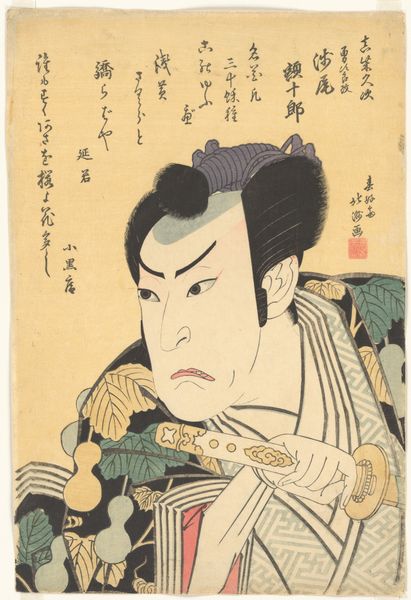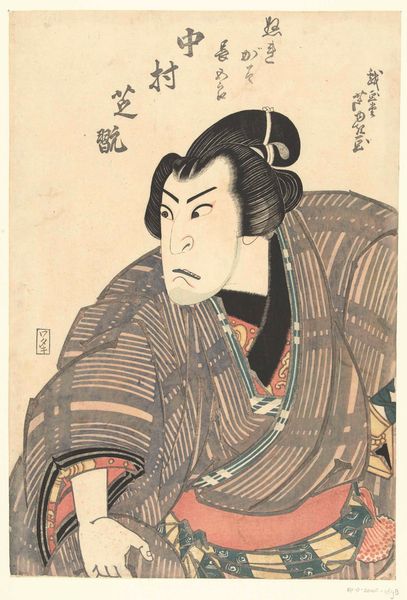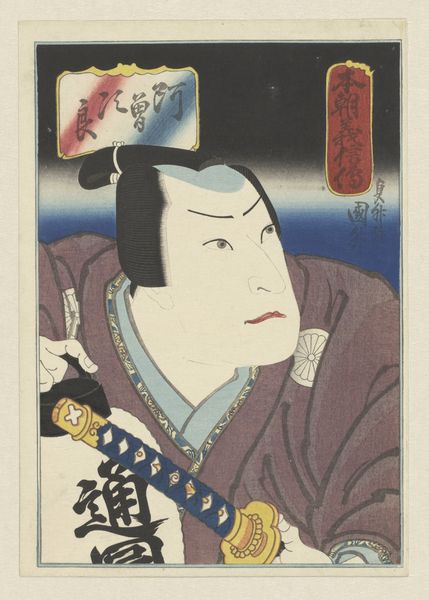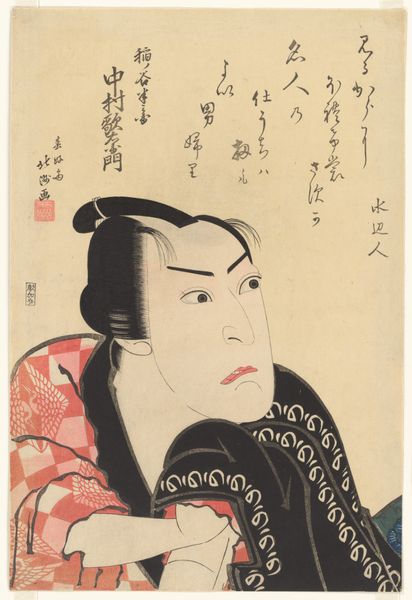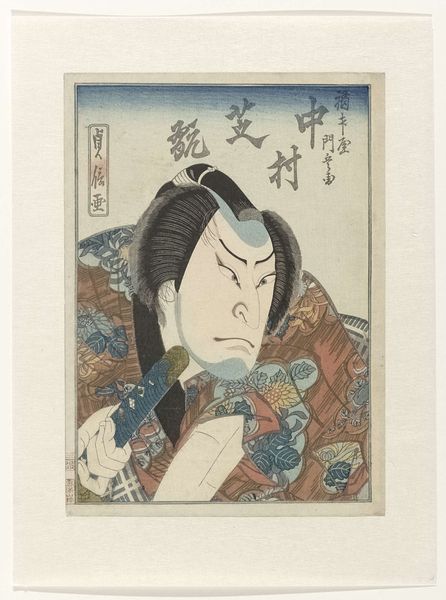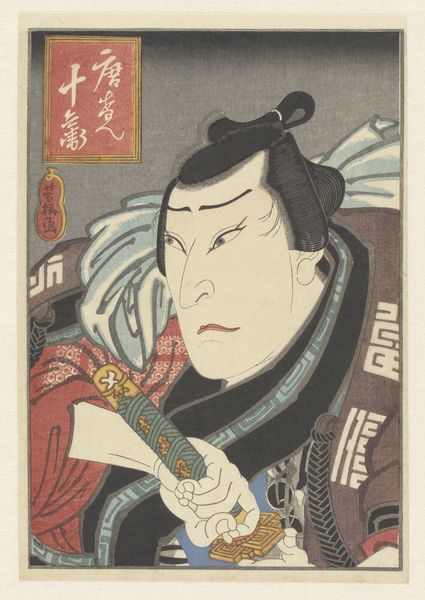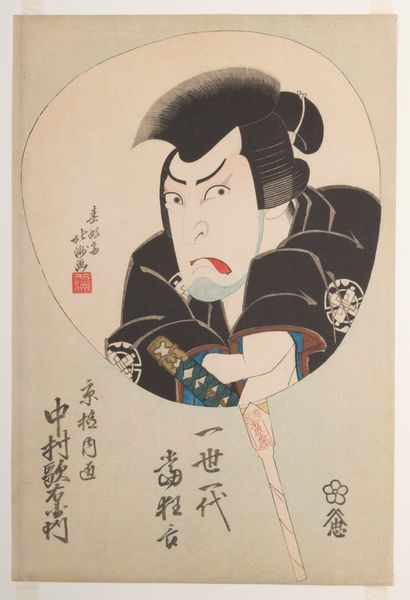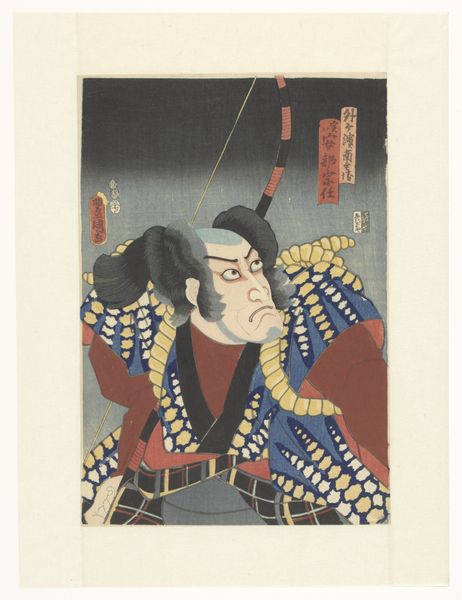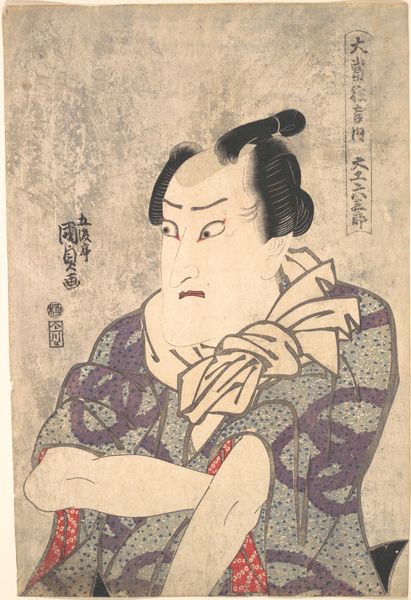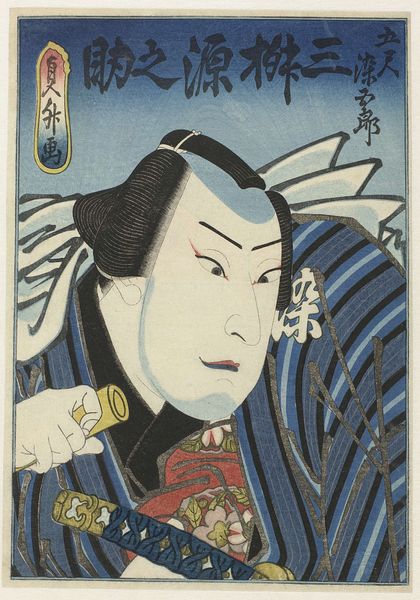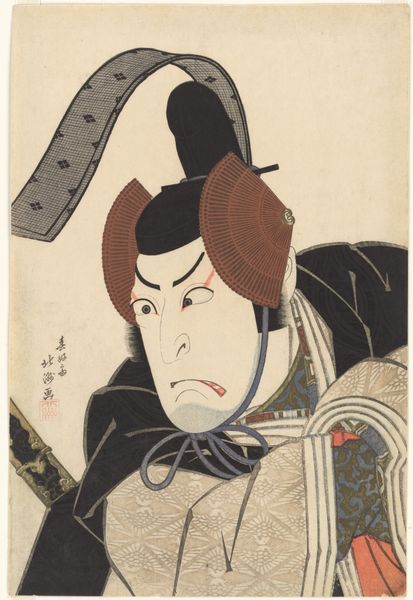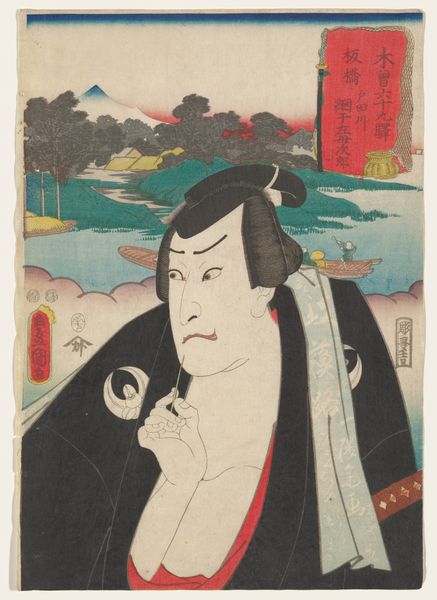
Kabuki Actor Ichikawa Ebijūrō I as Tōken (China Dog) Jūbei, in the play Benimurasaki ai de someage (Red and Purple, Rich Dyes of Osaka) 1822
0:00
0:00
#
portrait
# print
#
caricature
#
asian-art
#
caricature
#
ukiyo-e
#
history-painting
Dimensions: Vertical ōban; Image: 14 3/4 × 10 1/8 in. (37.5 × 25.7 cm)
Copyright: Public Domain
Curator: Alright, let’s delve into this striking Ukiyo-e print titled "Kabuki Actor Ichikawa Ebijūrō I as Tōken (China Dog) Jūbei, in the play Benimurasaki ai de someage (Red and Purple, Rich Dyes of Osaka)". It was created around 1822 by Shunkōsai Hokushū. Editor: The first thing that grabs me is the materiality – it's a woodblock print, right? I'm interested in the process; those lines are so clean, but there's a raw intensity to the subject. The figure almost leaps off the page. And the use of pigment – limited but incredibly impactful. Curator: Absolutely. This is a fantastic example of the actor prints so popular during the Edo period. These weren’t just portraits, they were powerful marketing tools for the Kabuki theaters and performers. Hokushū captured Ichikawa Ebijūrō here in his role as Tōken Jūbei, also known as China Dog, and you can see how this role served to shape Ebijūrō's public image as more than a person. Editor: So it's a kind of… celebrity endorsement, 19th-century style? I see the Kabuki connection. The exaggerated expression, the stylized costume – those bones! It is interesting that the artists are taking from death culture for commercial theatre production and self-advertisement. But tell me more about the printing process itself. The layering seems complex for a medium we often perceive as simple. Curator: The visual of a Kabuki actor wrapped in skulls may represent or act as memento mori within theatre, with actors literally and figuratively embracing death with performances. Editor: That's compelling when you think about the role of labor involved too. A carver dedicated time to shaping those skeletal details, the printer meticulously applying layers of ink – it's an incredibly collaborative and labour-intensive process, not something we necessarily associate with "mass" production today. Curator: Right. The entire system of Ukiyo-e printmaking relied on this division of labor. Think about the workshops where these prints were created; craftsmen working side-by-side to produce these incredibly detailed images for a growing urban audience. Editor: Looking closer, I see where the process, materials, and context intermingle, making each print such a fascinating historical object. I'll carry away new insights from the materiality of this print alone. Curator: Me too. It's a powerful image with complex socio-historical underpinnings; understanding these prints deepens our knowledge and respect for Japanese society at the time.
Comments
No comments
Be the first to comment and join the conversation on the ultimate creative platform.
